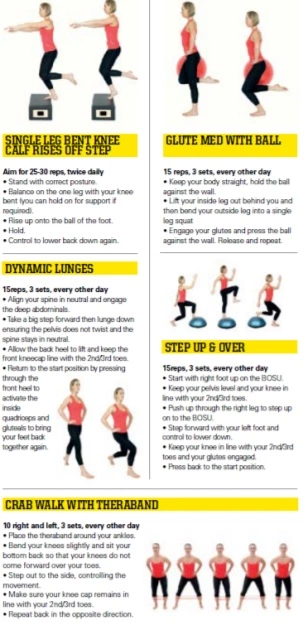Jon Grayson tells us how to get rid of lower leg pain TriathlonPlus March 2016
‘Shin splints’ or to give it it’s fancy medical term, medial tibial stress syndrome (MTSS), is one of the most common running injuries, and is an overuse injury that is rarely a short term issue and is usually persistent and recurrent. Usually a dull, nagging soreness, on the inside of the shin bone spreading down towards the ankle (medial tibial stress syndrome) or on the front of the shin bone (anterior tibial stress syndrome). This is usually evident at the start of the run, tends to ease once into the run as you warm up, but then intensifies. Depending on how intense this can reach a level causing runners to have to stop early into the run, and then stick around for the next few days when walking if very irritable.
There are many common biomechanical, neuromuscular and technique faults that result in the shins getting overloaded. Every time you land on 1 foot during running, a force up to x2.5 body weight will be going through the leg!! For a 4hr marathon runner, running at an average pace of 155 steps per minute, that’s 37,200 steps. That’s a lot of force…and it needs control!!!
Therefore, the key message is GET ASSESSED!! Use a running specialist. When treating a runner with pain we will use video analysis of to assess the technique, then break this down to screen for mobility, strength and control. A tailored strength and conditioning program along with simple running technique tips can go a long way.
The usual ‘PRICE’ treatment, taping, correcting footwear, or orthotics are only a short term, symptom reliever. It will not get rid of the problem.Common technique faults include slow step rates, and over striding. Adjusting your step rate towards the more desired level (170-190 steps per min) can always help reduce the overload on landing. A quicker, shorter step rate is what you should aim for. I’d strongly recommend using a running specialist to help with this.
Calf, quads and glut strengthening are essential to any runners strength and conditioning. For example, You should be able to perform 25-30 single calf raises on a step (well)!

